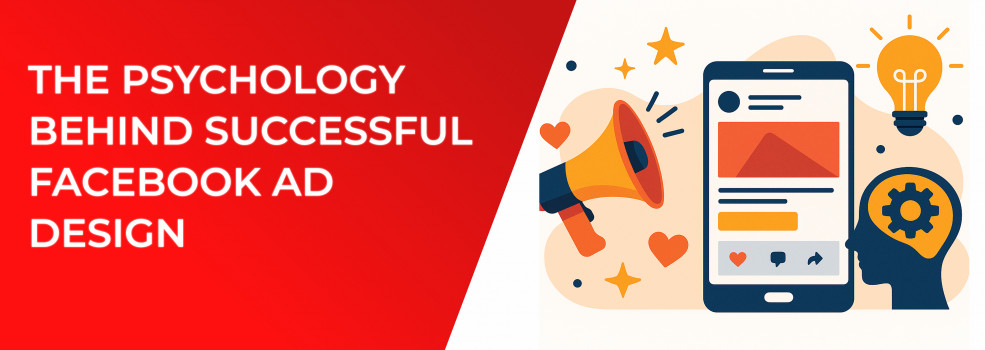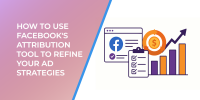Scrolling through Facebook is a rapid-fire sensory experience. In less than two seconds the average user decides whether to keep scrolling or tap an ad. Understanding that snap judgment is the starting point of every Facebook ad performance discussion. By weaving psychological insights into creative execution, you can capture more ad impressions Facebook, reduce average cost per click Facebook, and transform casual scrollers into loyal customers.
For a deeper dive into rapid-fire persuasion, check out The Psychology of Facebook Ads: How to Hook Your Target Audience in Seconds.
1. How the Brain Reads the News Feed
Researchers estimate the human eye gauges visual relevance in roughly 0.25 seconds, and that pause, or lack of it, determines whether your Facebook ads performance climbs or flatlines. Before we dive into specific design tactics, remember that every pixel must serve one purpose: making viewers feel “this is for me, right now.”
Below you will find a quick reference table. After reading, test each trigger against your own audience data and platform analytics to confirm it works for your niche.
Each cell above represents hours of A/B testing. An ad that nails these triggers can post a double-digit jump in average click through rate on Facebook ads. Ignoring them may lead to the dreaded Facebook ads not delivering message.
If you need a primer on reach and segmentation before you craft creative, start with Facebook Ad Targeting 101: How to Reach the Right Audience.
2. Visual Hierarchy That Leads to Action
Audiences instinctively scan ads in an F-shaped pattern: image first, headline second, call-to-action last. Lean into this habit instead of fighting it.
First, anchor attention with a striking hero image or looping video. Visual salience drives the raw number of ad impressions Facebook that actually register in memory. Under that, place a tight headline, forty characters or fewer. Short verbs like “Unlock,” “Grab,” or “Discover” fire neurons associated with momentum and lift Facebook ad metrics.
Finally, position a contrasting call-to-action button where the eye naturally lands. Small tweaks to the CTA copy can produce outsized gains in Facebook ads conversion rate. Testing “Start Now” versus “Get Offer” might sound trivial, yet those two words speak to different emotional motivations.
Not sure which format best carries your visual story — carousel, video or collection? The Ultimate Guide to Facebook Ad Formats breaks down the pros and cons.
3. Color, Emotion, and Memory
Color theory is not art-school trivia; it directly affects Facebook advertising analytics. Warm hues (reds, oranges) amplify urgency and can shave pennies off average CPC for Facebook ads when you run limited-time offers. Cool blues and greens foster trust, handy for subscription or finance brands aiming to boost Facebook ads metrics deeper in the funnel.
Pair color choice with brand consistency. Repetition builds recognition, and recognition shortens decision time. Faster decisions translate into cheaper Facebook ads cost per 1,000 impressions.
Consistent colors and fonts help prevent creative burnout, but you also need rotation tactics — see Ad Fatigue on Facebook: How to Spot It Early and Fix It Fast for warning signs.
4. Social Proof and Scarcity
Humans are social learners. Evidence that “people like me” have already succeeded becomes a shortcut for risk assessment. Drop real customer photos or testimonial snippets and watch your CTR Facebook climb.
Scarcity tactics such as timers, stock counters, and “Only 24 left” labels leverage loss aversion. When implemented thoughtfully, they enhance campaign budget optimization because each impression carries more persuasion per penny.
Pair testimonials with trust icons and follow the guardrails in How to Avoid Ad Rejection on Facebook: Meta Ad Policies Explained.
5. Message Framing: Gain vs. Loss
Should your copy promise a bright new future or warn of looming pain? The answer lies in testing. A gain-framed line (“Increase ROI fast”) activates approach motivation, which pairs well with Facebook pixel tracking audiences already familiar with your brand. A loss-framed angle (“Stop wasting ad spend”) triggers avoidance, nudging fence-sitters retargeted via a Facebook retargeting pixel.
Testing emotional vs rational messaging can reveal what truly motivates your audience to act.
Record every test inside your analytics dashboard and monitor shifts in Facebook advertising CPM and Facebook ads conversion rate to see which frame resonates.
6. Metrics That Matter
Data turns hunches into repeatable wins. The list below serves as a shorthand audit for performance reviews.
-
Ad impressions Facebook – Verifies thumb-stopping ability
-
Facebook ad CTR average – Indicates message clarity
-
Average cost per click Facebook – Reveals interest-targeting efficiency
-
Facebook ads conversion rate – Confirms persuasive strength
-
Facebook advertising CPM – Guides scaling decisions during advantage campaign budget tests
When these metrics trend in the right direction, you know psychology and optimization are working together.
7. Optimization Loops That Never End
Think of creative iteration as a game of variable rewards. Each fresh headline, image swap, or emoji tweak can unlock incremental gains.
-
Ideate one psychological lever to test, such as curiosity versus urgency.
-
Spin up two variants and feed them equal spend using Facebook ad optimization best practices.
When you’re deciding what to experiment with first, use the framework in What to Test First: Creative, Copy or Audience in Facebook Campaigns?. -
After fifty conversions, crown a winner.
-
Use a Facebook ad optimization tool to duplicate the champion into new audience buckets.
-
Archive the loser and brainstorm the next variable.
Treat the process as perpetual. Platform features update, users develop banner blindness, and “best practices” evolve. Keeping the loop turning guards against performance decay.
8. Pro Tips for Long-Term Success
-
Build every new campaign with create pixel on Facebook configured correctly because data gaps derail insight.
-
Allow at least one full learning phase before tweaking bids or budgets.
-
Monitor frequency caps weekly; high repetition can sink Facebook ad performance even if creative is strong.
-
When fatigue hits, consult reputable Facebook ads advice sources and revisit audience overlap to ensure you are reaching the right segments.
Low CTR dragging your metrics down? How to Solve Low Click-Through Rates (CTR) on Facebook Ads walks through quick fixes.
Final Thoughts
Facebook users do not read ads; they feel them. The split-second emotional reaction triggers the logical mind, which checks external proof and finally clicks the button. By respecting this psychological chain and backing every creative decision with data, you sharpen each part of the funnel, from ad impressions Facebook all the way to payment confirmation. Lean on structured experimentation, integrate fresh creative insights often, and your next campaign will not just reach people, it will move them.

